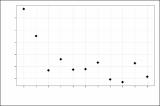Por favor, use este identificador para citar o enlazar a este item:
http://hdl.handle.net/10261/76597COMPARTIR / EXPORTAR:
 SHARE SHARE
 CORE
BASE CORE
BASE
|
|
| Visualizar otros formatos: MARC | Dublin Core | RDF | ORE | MODS | METS | DIDL | DATACITE | |

| Título: | Inverse age-dependent accumulation of decabromodiphenyl ether and other PBDEs in serum from a general adult population |
Autor: | Garí, Mercè CSIC ORCID ; Grimalt, Joan O. CSIC ORCID | Fecha de publicación: | 2013 | Editor: | Elsevier | Citación: | Environment International 54: 119-127 (2013) | Resumen: | Polybromodiphenyl ethers (PBDEs), including the decabromodiphenyl congener (BDE-209), were determined in the serum of 731 individuals from a general adult population (18-74. years) collected in 2002 in Catalonia (north-eastern Spain). The BDE-209 was the predominant congener (median 3.7. ng/g lipid) followed by BDE-47 (2.6. ng/g lipid) and BDE-99 (1.2. ng/g lipid). PBDEs in this population (median 15.4. ng/g lipid) ranked amongst the highest of previously described concentrations in populations in Europe, Asia, New Zealand and Australia, yet it was lower than those found in North American reports. Age was clearly the socio-demographic factor of highest influence on the PBDE distributions. However, unlike usual trends of higher accumulation of POPs through age, the higher concentrations were found in young individuals (< 30. years) rather than in adults (≥ 30. years), with differences of 14%, 31% and 46% in the most abundant congeners (i.e. BDE-209, BDE-99 and BDE-47, respectively). This age-dependent distribution of PBDEs (including the case for BDE-209, which is shown for the first time in this study) is explained by the higher and widespread use of these compounds since the 1980s. In view that these compounds remain highly used, this accumulation pattern is likely to evolve, anticipating an increasing level of PBDE concentrations in future general population surveys, yet probably assuming an age-dependent increase pattern. Socio-economic level was also a determinant of BDE-47 concentrations, but only relevant for the least affluent class, suggesting that lifestyle and environmental conditions in the dwelling place may also contribute to exposure. Nonetheless, gender, body mass index, place of birth, parity and education level did not show any statistically significant influence on the observed PBDE distributions. © 2013 Elsevier Ltd. All rights reserved. | URI: | http://hdl.handle.net/10261/76597 | DOI: | 10.1016/j.envint.2013.01.012 | Identificadores: | doi: 10.1016/j.envint.2013.01.012 issn: 0160-4120 |
| Aparece en las colecciones: | (IDAEA) Artículos |
Ficheros en este ítem:
| Fichero | Descripción | Tamaño | Formato | |
|---|---|---|---|---|
| Inverse age-dependent accumulation of decabromodiphenyl.doc | 239 kB | Microsoft Word | Visualizar/Abrir | |
| Figure1revised.pdf | 13,46 kB | Adobe PDF |  Visualizar/Abrir | |
| Fig2.pdf | 5,75 kB | Adobe PDF |  Visualizar/Abrir | |
| Fig3.pdf | 5,02 kB | Adobe PDF |  Visualizar/Abrir |
CORE Recommender
SCOPUSTM
Citations
32
checked on 10-abr-2024
WEB OF SCIENCETM
Citations
30
checked on 27-feb-2024
Page view(s)
340
checked on 18-abr-2024
Download(s)
585
checked on 18-abr-2024
Google ScholarTM
Check
Altmetric
Altmetric
NOTA: Los ítems de Digital.CSIC están protegidos por copyright, con todos los derechos reservados, a menos que se indique lo contrario.
